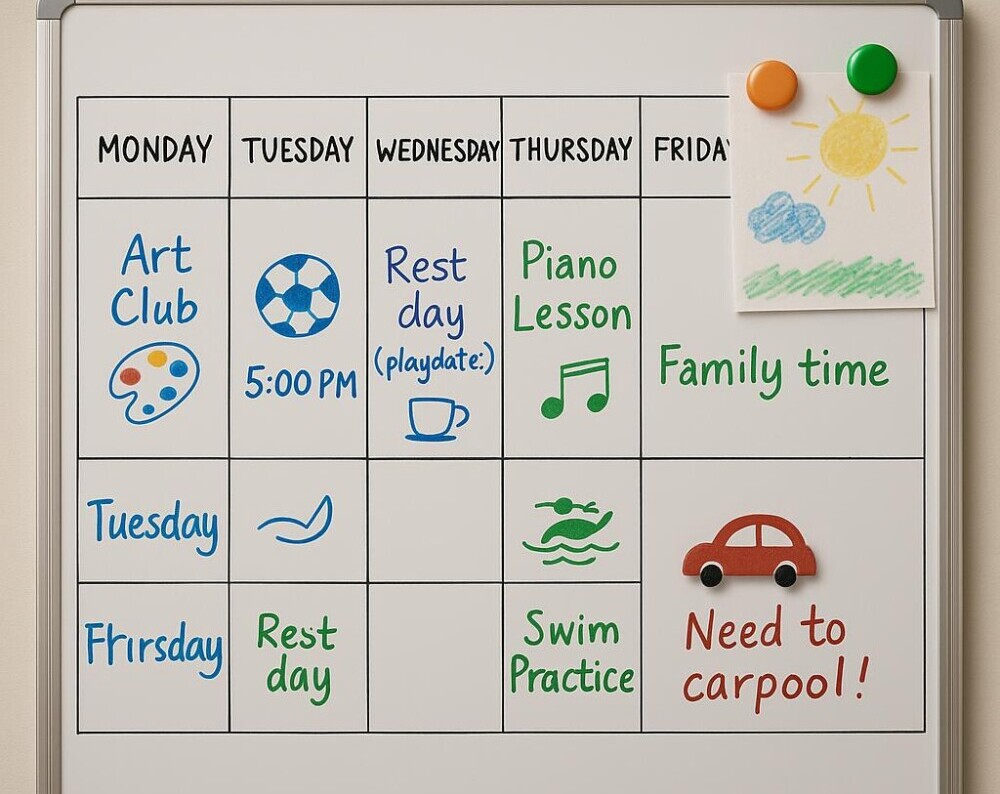
Choosing the right extracurricular activities is all about helping your child discover what they love, one after-school adventure at a time. Whether your child spends hours sketching imaginary worlds or can’t stop singing and dancing around the house, their interests offer clues about what might truly light them up. The best after-school activities build on those natural sparks, giving children the chance to grow, explore, and develop confidence in ways school alone might not offer.
Sometimes, those sparks are easy to spot – and sometimes, it takes a bit of trial and error to uncover them. Choosing can be especially tricky if your child is good at lots of things but doesn’t show a strong preference for any one area. In that case, it’s a good idea to let them try a variety of activities, making use of free or low-cost trial sessions where possible. Sometimes, the right course leader can make all the difference: an enthusiastic instructor can often ignite a child’s interest more than the subject alone.
The Value of Diverse Experiences
Encouraging your child to try a range of activities can be incredibly beneficial. Not only do they discover what they enjoy, but they also learn what they don’t like – which is just as valuable. A child who thinks they aren’t “good at art” might surprise themselves by falling in love with collage or mosaic-making.
Beyond discovering likes and dislikes, diverse experiences help children transfer skills across different areas. A child learning music may find that understanding rhythm and patterns enhances their performance in maths, showing how one passion can enrich another.
Trying new things also helps children develop resilience and adaptability. Facing small challenges – whether on the sports field, in a music room, or on stage – teaches perseverance and problem-solving skills, often without them even realising it.
Supporting Shy or Hesitant Children
Some children are eager to jump in, while others may be curious but nervous about joining a group activity. If your child is hesitant, small steps can help: bringing a friend along, attending an open day, or simply watching a session first can ease anxieties. Reassure them that it’s normal to feel a bit unsure, and that they can take their time to settle in.
Balancing Time and Commitment
Helping your child maintain a balanced schedule is crucial, especially for high-achieving children who want to do everything. An overloaded timetable can quickly lead to stress or burnout. Watch out for signs like irritability, tiredness, or slipping grades, which may suggest it’s time to scale back.
Downtime is just as important as scheduled activities. Children need unstructured time to relax, socialise, and simply be. The more commitments your child has, the more support they’ll need with time management – learning to prioritise is an essential life skill.
There will be times when commitments clash: exams may coincide with rehearsals or sports finals. Guiding your child to prioritise when needed shows them that it’s okay to make choices, and that they don’t have to be superhuman.
Evaluating Long-term Benefits and Opportunities
The right activities can sometimes open future doors. For very specialised fields like professional sports or music careers, early and intense involvement is often necessary.
For older children, extracurricular activities can enhance university applications or future job prospects. Universities, especially in the UK, value genuine passion and commitment related to your child’s chosen field. For instance, participating in the UK Maths Challenge can strengthen a Maths application enormously, as my own grandson’s experience shows.
Meanwhile, US universities often also value strong extracurriculars like leadership roles or national-level sports involvement, sometimes even offering scholarships.
That said, extracurricular activities are valuable in themselves – teaching teamwork, leadership, creativity, and resilience. They shape confident, adaptable young people ready for whatever the future holds.
Managing the Logistics
Advice often assumes you’re managing activities for one child – but real life is rarely that simple! Juggling football practice for one child with piano lessons for another, often across town during rush hour, can be a major feat of organisation.
Visual planners, colour-coded whiteboards, or shared digital calendars can help keep everyone’s schedules visible and manageable. It’s important to factor in not just the activity itself, but travel time, downtime, and family meals to keep life feeling balanced for everyone.
Assessing and Adjusting Choices Regularly
As your child grows, their interests will change – and that’s perfectly normal. Check in regularly to see how they’re feeling about their activities.
It’s important to show that stopping an activity doesn’t mean failure. If something feels like a chore rather than a joy, it’s okay to step back. Trial sessions can be very useful here: sometimes, loving an activity socially (like ice-skating with friends) doesn’t mean a child will enjoy structured lessons in that skill.
When children feel supported in trying, adapting, and sometimes quitting without shame, they become more confident decision-makers – an ability that will serve them far beyond childhood.
Practical Tips for Choosing Activities
- Observe your child’s interests: What engages them naturally? Where do they lose track of time?
- Have conversations: Talk about what they enjoy and what they’d like to try.
- Encourage exploration: Free trial sessions or low-cost community options (like those offered by libraries, councils, or charities) can be brilliant ways to try things out without pressure.
- Maintain balance: Make sure there’s space for rest, family time, and simple unwinding.
- Be flexible: Interests change, and that’s part of growing up. Support them as they discover what fits.
- Teach time management: Help them juggle responsibilities in a healthy, manageable way.
By choosing activities thoughtfully, supporting exploration, and keeping the focus on growth and enjoyment rather than achievement alone, you’re helping your child build a life full of confidence, curiosity, and joy.
If you’re looking for a practical step-by-step guide with suggested activities and important considerations, check out our companion post: How to Choose the Right Extracurricular Activities for Your Child – A Practical Guide.
